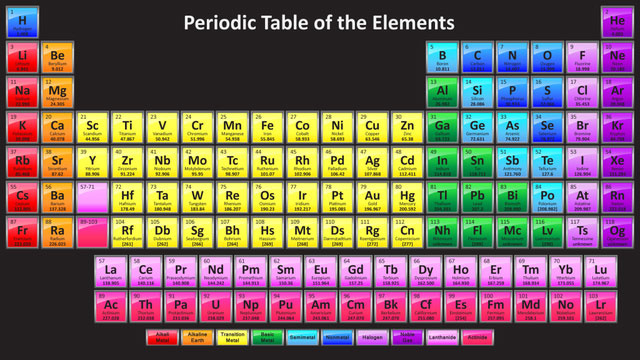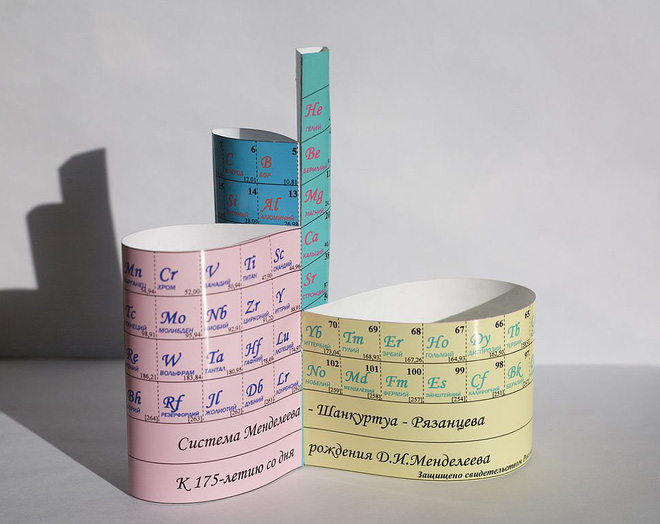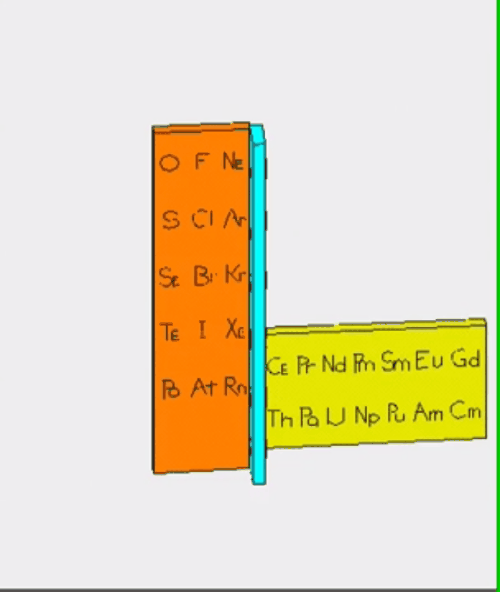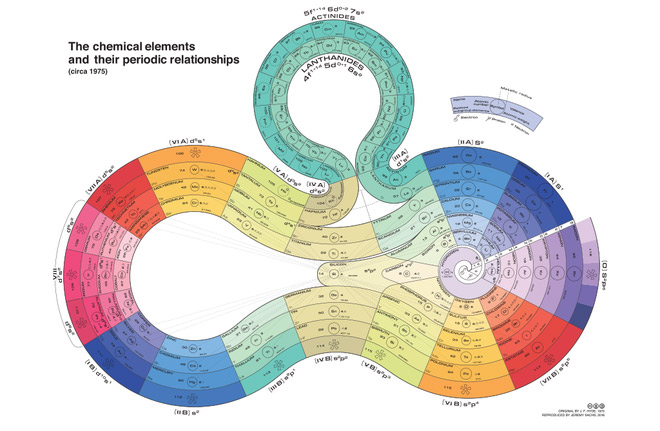The periodic tables have the weirdest shapes in the world not everyone knows
The periodic table (periodic table of chemical elements or the periodic table of Mendeleev) published by Siberian chemist Dmitri Mendeleev 150 years ago. In the periodic table, the elements that make up the universe are arranged into a table with the order of the number of atoms increasing. This is an invaluable gift laying a solid foundation for science.
In his periodic table, Mendeleev has not made room for the next generation to add elements not discovered at the time.
Before Mendeleev, there were many scientists who tried to arrange elements into logical tables. Those efforts have created periodic tables with strange shapes like this.
Original periodic table

In this periodic table there are more elements than Mendeleev's version, including nihonium (Nh), moscovium (Mc), tennessine (Ts), and oganesson (Og) in the seventh row, with elements arranged according to The atomic number of each substance, based in part on the chemical properties of the substances.
Tower - ADOMAH periodic table of Valery Tsimmerman in 2006

In this periodic table, the elements are arranged based on 4 quantum numbers of electrons, these 4 numbers are used to describe the position and motion of electrons in atoms instead of sequencing based on integers. death.
Before Valery Tsimmerman, Charles Janet, an engineer and biologist, also made this idea.
The spiral - The periodic table of Theodor Benfey, 1964

In this unique periodic table, hydrogen is in the central position, the elements are arranged in order of number of atoms swirling out. In the table, chemist Theodor Benfey also left the position for elements that have not been discovered by science.
3D flowers

There is no hydrogen or helium in this periodic table. Part of the green color palette (greenish-green light) on the back contains alkaline earth metal on the back and alkaline metal on the front. Other elements of the periodic table are arranged in the remaining two 'petals', divided according to their characteristics.

Rainbow ribbon - The periodic table created by James Franklin Hyde in 1975

Hyde gives the silicon a respectable mid-position, because he is a scientist specializing in silicon compounds. From that position, he created connections to highlight how silicon connects to the remaining elements in the table.
However, the table still starts from hydrogen - at the center of the right circle, other elements align in turn to the outside. Elements that are related to each other have distinct colors.
You should read it
- Amazing discovery, chemical elements do not follow quantum mechanics theory
- Enable / disable Periodic Scanning feature on Windows 10
- DURATION function - The function returns the periodic periodic interest payments in Excel
- TEMPORARY TABLE temporary table in SQL
- CLONE TABLE in SQL
- 35 tools, scripts and plugins to build HTML Table
 Fast sleep after 2 minutes of American soldiers
Fast sleep after 2 minutes of American soldiers How much is the incubator?
How much is the incubator? Guide 8 escape skills when there is fire in high-rise buildings
Guide 8 escape skills when there is fire in high-rise buildings Many ways to celebrate the victory of fans when U23 Vietnam reached the final
Many ways to celebrate the victory of fans when U23 Vietnam reached the final A catalyst has been found to convert nitrates into water and air
A catalyst has been found to convert nitrates into water and air Algae can be converted into drugs and renewable fuels with the help of high technology
Algae can be converted into drugs and renewable fuels with the help of high technology